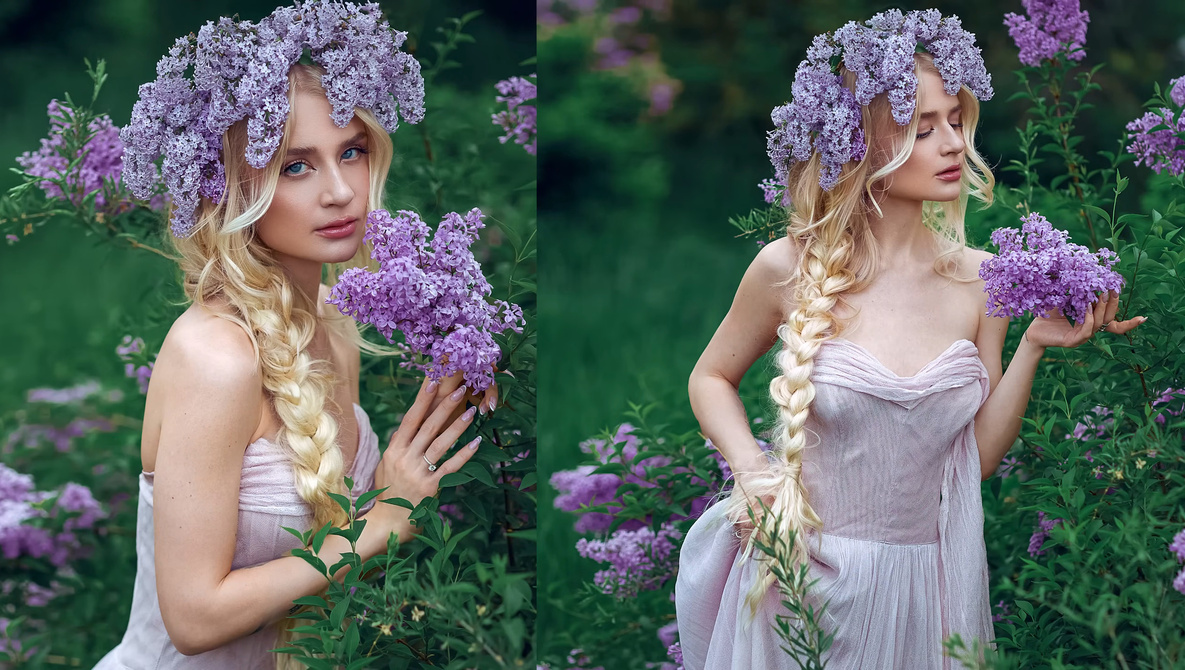Beautiful portraits don’t depend on expensive gear. The right light, color, and idea can transform a simple setup into something striking. Irene Rudnyk proves that in this lilac-inspired shoot, using gear that’s within reach for anyone who wants professional results without spending thousands. The focus here isn’t on specs but on how to use what you have to make images that stand out.
Coming to you from Irene Rudnyk, this relaxed and practical video walks through how she creates elegant portraits using a Canon RP with two affordable lenses: the Canon RF 50mm f/1.8 STM and Canon RF 85mm f/2 Macro IS STM. She shows how both lenses can produce beautifully soft backgrounds and sharp details, even on an entry-level full frame body. Instead of relying on high-end cameras, Rudnyk focuses on small creative decisions, like shooting from a ladder to eliminate sky distractions or adjusting the model’s placement among lilac blooms. The shoot demonstrates how composition and patience do more for your photos than gear upgrades.
Rudnyk takes the simple idea of a handmade lilac crown, a pastel gown, and a cloudy day and turns it into a cohesive visual story. The moody weather adds depth to the colors, giving her soft purple tones a dreamy quality. She keeps things fluid, moving her model through the location until every frame feels balanced. Her process is calm, focused, and improvisational. You see her test different angles, swap between lenses, and respond to the light in real time. That kind of adaptability is what transforms everyday locations into strong portrait settings. Watching her work feels like a reminder that photography rewards observation more than equipment.
Later in the shoot, Rudnyk switches between focal lengths to control compression and depth. You see how the 50mm gives a more intimate view, while the 85mm isolates the subject beautifully. Her transitions between lenses aren’t technical lectures; they’re intuitive moments that reveal how different glass can shape atmosphere. The model’s pose, the background blur, even the way light wraps around her face shift subtly with each change. It’s an education in observation more than instruction.
Rudnyk also touches on editing, showing how to refine portraits without overworking them. She removes details that distract from her chosen aesthetic and focuses on clean, cohesive tones. The editing process becomes an extension of her on-set choices: soft, consistent, and story-driven. There’s an emphasis on restraint, something often missing in portrait tutorials. The goal isn’t to perfect an image but to protect its feeling. Check out the video above for the full rundown from Rudnyk.

